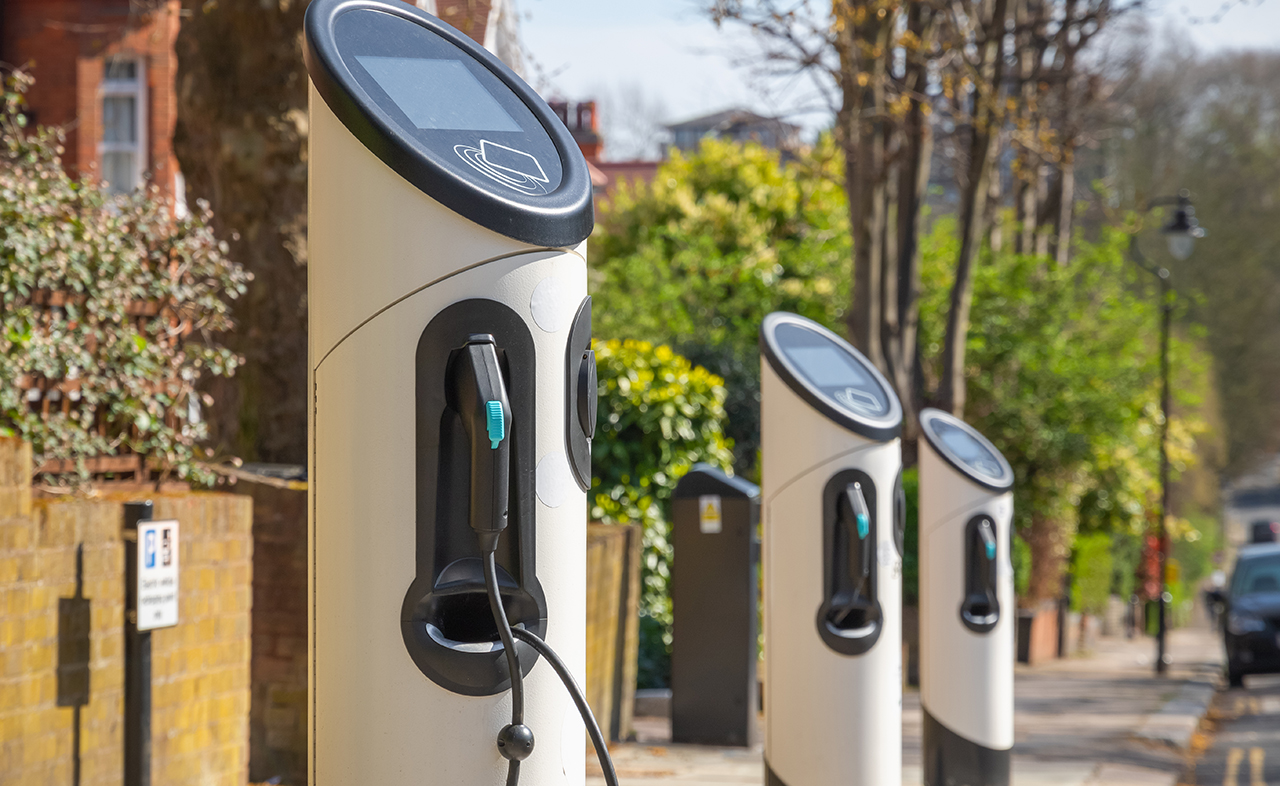IoT 无线技术在交通领域的应用正在迅速增长,在运营效率、成本节约、安全、安保和移动性等方面都取得了巨大的进步。随着世界各地的城市和市政当局将无线技术应用于交通领域,预计IoT 将产生巨大的影响。
交通管理,
应急 行人和自行车的安全。
公共交通 此外,IoT ,从电动汽车充电站到互联汽车技术,汽车行业将从一系列创新中受益。
在本篇文章中,我们将从 Digi 收集的客户成功案例中了解IoT 在交通领域的一些具体应用,如列车正向控制 (PTC)、车辆分析、票务系统、公交系统安全和高速乘客 Wi-Fi。
将IoT 纳入运输系统
 技术进步推动了IoT 在交通应用领域的应用,使城市更加智能,城市系统更加易于管理,包括固定应用和移动应用。
技术进步推动了IoT 在交通应用领域的应用,使城市更加智能,城市系统更加易于管理,包括固定应用和移动应用。
在交通信号灯、摄像头和交叉路口管理等固定应用中,蜂窝网络的可靠性现已可与传统有线网络相媲美,创造了几年前还不存在的机遇。而且其实施成本要低得多。
对于警察、消防、救护车、公交车、轻轨和辅助运输车辆等应用,移动路由器技术近年来取得了显著进步,而随着 4G 网络的快速发展和 5G 的到来,网络的速度和容量也得到了提高。
由于取得了这些进步,IoT 交通运输解决方案能够在各种运行条件下满足越来越多的需求。目前,IoT ,其中一些重要的交通用例包括以下内容:
- 交通管理: IoT 城市交通管理应用软件可改善安全和交通流量,帮助城市从基础设施支出中获得最大价值。
- 公共交通:公交IoT 应用程序使公交机构能够更高效地运营,同时通过信息标识和高速互联网连接等设施改善乘客体验。
- 电动汽车和电动汽车充电:电动汽车和电动汽车充电站的数量正在迅速增长。整个电动汽车基础设施将依靠IoT 连接进行系统维护、支付处理等。
- 铁路:IoT 解决方案支持轻轨和重型商用铁路系统,Digi 凭借高性能的 5G 移动接入路由器,率先实现了可靠、安全的高速通信和地理定位,即使在隧道和城市峡谷中也是如此。
- 卡车/物流:车队经理可以跟踪车辆分析,减少卡车翻滚的需要,实现流程自动化以节约运营成本,包括卡车制冷的监控和报告。
让我们看看IoT 在交通领域的一些例子。
示例 1:交通管理
 智能交通系统(ITS),又称智能交通管理系统(STMS),是通过将传感器、摄像头和其他交通监控技术与交通控制系统(如交通信号灯、动态信息板和车载通信与警报系统)连接起来来实现这一目标的。
智能交通系统(ITS),又称智能交通管理系统(STMS),是通过将传感器、摄像头和其他交通监控技术与交通控制系统(如交通信号灯、动态信息板和车载通信与警报系统)连接起来来实现这一目标的。
以下是IoT 在交通管理方面可以解决的一些问题:
- 交通拥堵:交通堵塞既浪费时间又浪费燃料,因为一个多世纪前建造的街道和公路被迫承载前所未有的交通流量。
- 安全:大多数碰撞事故都发生在十字路口,更好的信号控制可以使交通更顺畅、更安全、更可预测。
- 污染:交通管理系统可以减少汽车和卡车在交通中的空转时间,从而大大减少机动车的排放量。
- 应急响应:无论交通状况如何,包括警察、消防和救护车在内的应急车辆都必须优先通行。
以下是一些成功将IoT 用于交通管理的使用案例。
全国最繁忙城市环境中的交通管理
纽约市是世界上交通最密集的城市之一,有数千个十字路口设有交通信号灯。所有这些信号灯都需要实时协调,以便在这座 "不夜城 "里,无论白天还是黑夜,都能提供顺畅、安全的交通流量。
 纽约最近需要 升级 14,000 多个交通信号灯的连通性因此,它选择在每个路口使用 Digi WR54 双蜂窝路由器,以及 Digi 远程管理器 平台进行设备配置和管理。一经部署,该市交通局就被评为 年度杰出智能交通系统项目 - 交通管理系统 该项目由纽约智能交通协会(ITS-NY)提供。纽约市无线基础设施网络 (NYCWIN) 为所有智能交通系统设备(包括交通摄像头、可变信息标志 (VMS)、车辆检测设备等)提供全市范围的通信主干网。
纽约最近需要 升级 14,000 多个交通信号灯的连通性因此,它选择在每个路口使用 Digi WR54 双蜂窝路由器,以及 Digi 远程管理器 平台进行设备配置和管理。一经部署,该市交通局就被评为 年度杰出智能交通系统项目 - 交通管理系统 该项目由纽约智能交通协会(ITS-NY)提供。纽约市无线基础设施网络 (NYCWIN) 为所有智能交通系统设备(包括交通摄像头、可变信息标志 (VMS)、车辆检测设备等)提供全市范围的通信主干网。
FirstNet Ready™ 加强应急准备
 FirstNet® 是一个覆盖全国的无线网络,在发生大规模紧急事件(如飓风、野火或其他影响整个城市或地区的事件)时,为急救人员和关键基础设施提供优先、先发制人的通信。
FirstNet® 是一个覆盖全国的无线网络,在发生大规模紧急事件(如飓风、野火或其他影响整个城市或地区的事件)时,为急救人员和关键基础设施提供优先、先发制人的通信。
FirstNet Ready™ 设备,如用于纽约基础设施项目的 Digi WR54 蜂窝路由器,以及新的 Digi TX54每当民用手机使用量激增时,蜂窝网络就会受到干扰,调度员和急救人员就无法相互通信。
示例 2:公共交通IoT
 IoT IoT 应用程序可用于多个系统:
IoT IoT 应用程序可用于多个系统:
- 路由和调度
- 车辆发动机监控
- 实时安全摄像头
- 乘客无线网络连接
- 数字标牌
下面举例说明IoT 在运输方面的功能和优势。
公交运力监测与管理
芝加哥公共交通管理局(CTA)因科威德(Covid)大流行而面临前所未有的乘客数量变化,在其最繁忙的一条公交线路的试点项目中采用了创新的IoT 解决方案。CTA 采用了各种乘客计数技术以及先进的分析和预测建模技术来进行前瞻性需求管理。
试点项目中的每辆公交车都配备了 Digi WR54 移动接入路由器,用于与车载乘客传感器和系统进行通信。通过对数据进行分析,为主动式公交需求管理创建预测模型。路由器本身通过Digi 的云网络平台Digi Remote Manager® 进行监控和管理。Digi Remote Manager 通过性能和状态指标的可视化仪表板提供对所有设备的完全可视性。
旅客票务和信息系统
 安全、便捷的售票对任何公交系统的成功都至关重要。Digi 有几家客户在这一领域开发了IoT 应用程序。例如 TransData 是一家IoT 系统集成商,为斯洛伐克的公共交通开发支付和识别应用。TransData 票务和信息系统需要卓越的视频性能、Wi-Fi 和蓝牙,以及与公交车辆数据系统和蜂窝调制解调器的连接。公司的旗舰产品是一个多层面解决方案,支持广泛的功能,包括
安全、便捷的售票对任何公交系统的成功都至关重要。Digi 有几家客户在这一领域开发了IoT 应用程序。例如 TransData 是一家IoT 系统集成商,为斯洛伐克的公共交通开发支付和识别应用。TransData 票务和信息系统需要卓越的视频性能、Wi-Fi 和蓝牙,以及与公交车辆数据系统和蜂窝调制解调器的连接。公司的旗舰产品是一个多层面解决方案,支持广泛的功能,包括
- 安全的票价交易
- 易于使用的电子卡系统简化了乘客体验
- 全球定位系统(GPS)跟踪路线指引,最大限度减少延误
- 宣传当地商店、餐馆和景点的数字标牌
- 高速乘客无线网络,提供可靠的上网服务
超小型的Digi ConnectCore®系统模块(SOM)支持这些应用,它以合理的价格满足 TransData 的连接要求。Digi ConnectCore® 6 可以承受极端高温、潮湿和振动等恶劣条件,同时保持可靠的网络连接。
公共交通系统计算机辅助调度
底特律市郊捷运局(SMART)运营着一支由 330 辆生物柴油和混合动力电动巴士组成的地铁巴士车队,线路里程超过 1,100 英里,每天运送乘客 32,000 人次。面对如此庞大的车队,对车辆进行监控以确保最高水平的乘客安全和准点率至关重要。
SMART 需要升级老化的计算机辅助调度(CAD)/车辆自动定位(AVL)系统,该系统是建立在通过三个租赁塔连接的传统模拟无线电网络基础上的。SMART 首先考虑从模拟迁移到数字,并增加信号塔的数量,但这种方法成本过高。最终,SMART 利用 Digi WR44 R 移动蜂窝路由器(及其后续产品Digi TX54)内置的分组优先服务,将 CAD 改为蜂窝 VOIP。
改用基于蜂窝的 AVL 后,SMART 现在可以实时收集和分析更广泛的数据和指标,包括车辆位置和速度。此外,还可以采集维护数据,帮助预防故障和加快维修周期。数据通过高度安全的 VPN 隧道传输到公交运营中心,而操作员可以使用 VoIP 手机与中央调度中心进行通信。得益于这些升级和改进,SMART 团队估计每年可节省 7 万多美元。
示例 3:电动汽车和电动汽车充电
 未来几十年,随着全球汽车行业向电动汽车(EV)转型,密集的电动汽车充电站基础设施将随着新型电动汽车、公共汽车和卡车的发展而不断壮大。IoT ,这对我们实现以下目标至关重要 电动汽车基础设施 扩大规模以满足需求。我们可以预见,每条主要公路沿线都将建起电动汽车充电站。工作场所、公寓大楼、购物和娱乐场所也将进行改造,以提供便捷的汽车充电服务。
未来几十年,随着全球汽车行业向电动汽车(EV)转型,密集的电动汽车充电站基础设施将随着新型电动汽车、公共汽车和卡车的发展而不断壮大。IoT ,这对我们实现以下目标至关重要 电动汽车基础设施 扩大规模以满足需求。我们可以预见,每条主要公路沿线都将建起电动汽车充电站。工作场所、公寓大楼、购物和娱乐场所也将进行改造,以提供便捷的汽车充电服务。
电动汽车充电站将需要IoT 连接来实现一系列功能。IoT 应用程序将用于通知正在寻找充电站位置的驾驶员,与充电系统所有者或管理者进行通信,当然也可用于计费和支付目的。 Digi 嵌入式系统 将成为许多此类应用的核心。
AddÉnergie 电动汽车充电
AddÉnergie 公司总部位于加拿大魁北克省,为公共和私营部门市场开发、制造和运营电动汽车充电站,包括为加拿大两个最大的充电网络 VERnetwork™ 和 Electric Circuit 提供基础设施。AddÉnergie 为电动汽车司机和充电站业主提供门禁控制、能源管理和支付服务,包括在充电完成后发送电子邮件通知司机的应用程序。该解决方案还为运营商提供预防性维护功能,使他们能够监控每个充电站,并在某些情况下远程解决问题。
AddÉnergie选择Digi技术,包括Digi XBee®无线模块和蜂窝网关,是因为它能够 "在繁忙的城市环境中进行通信"。该解决方案有助于提供无缝的用户体验,还能让网络提供商轻松监控所有活动。
老化的城市公交车焕然一新IoT
Reborn Electric 是一家位于智利圣地亚哥的工程公司,该公司利用已达到使用年限的柴油公交车,为其改装电池供电的电动马达。改用零排放的电力驱动是一种"绿色技术 "解决方案,可大大延长车辆的使用寿命,同时减少城市空气污染。为了更新车辆的车载电子设备,Reborn 选择了 Digi ConnectCore单板计算机 (SBC),它提供遥测功能,可监控车辆行驶路线、跟踪耗电量并收集数据,以便进行预测性维护。
示例 4:铁路通信和 PTC
列车控制和实时通信对铁路系统至关重要,为服务于这一关键任务领域,IoT 在运输业的这一细分市场的应用正在快速增长。
全球导航卫星系统惯性导航
IoT 实现的一项重要功能是不受限制的惯性导航 (UDR),它可以实现比标准 GPS 更复杂、更精确的定位。Digi TX64 5G和TX64 5G Rail蜂窝路由器包括一个 GNSS 死区重定位模块,当 GPS 信号被阻挡时(例如,当车辆穿过隧道或天桥下面时),该模块利用惯性传感器数据保持连续性。
列车控制系统
宾夕法尼亚州南部运输管理局(SEPTA)在费城及其周边地区提供轻轨、地铁和公共汽车服务,是首批安装列车正向控制(PTC)系统的运输系统之一,这是一种先进的列车信号系统,旨在防止因违反速度和信号规定而造成的撞车、脱轨和轨道工人受伤。
SEPTA 与 Digi 合作,为 PTC 部署了正确的连接解决方案:
机车和其他车辆使用 Digi WR44 RR,通过 220 MHz 无线电将 PTC 数据信息转发到路旁或从路旁转发出去。Digi WR44 RR(及其后续产品Digi TX64 5G Rail)可通过蜂窝链路实现远程系统维护、配置和网络管理,从而提高网络可靠性和铁路系统的可视性。SEPTA 系统的性能超越了 PTC,实现了全面的基于通信的列车控制 (CBTC),从而提高了调度效率,增加了运力,节省了燃料。
下载我们的 PTC 白皮书
进一步了解蜂窝电话在完成 PTC 任务方面发挥的日益重要的作用
下载 PDF
摘要
世界各地的运输公司和机构都在采用IoT 解决方案,以提高安全性、性能和成本效益,并为乘客和驾车者带来舒适和便利。一套完整的 DigiIoT 解决方案可满足地面运输几乎所有方面的需求。
此外,Digi 还有专家团队随时准备提供指导、规划、设计或部署服务。Digi 无线设计服务为正在设计产品并需要专家支持其原型设计、PCB 布局、天线设计和上市需求的开发商和 OEM 提供支持。Digi 专业服务团队为正在规划网络连接和基础设施升级以转变运营方式的政府和其他组织提供支持。
如需了解有关DigiIoT 交通运输解决方案的更多信息,请立即联系我们。
注:本博客最初发布于2018年,已于2022年更新。